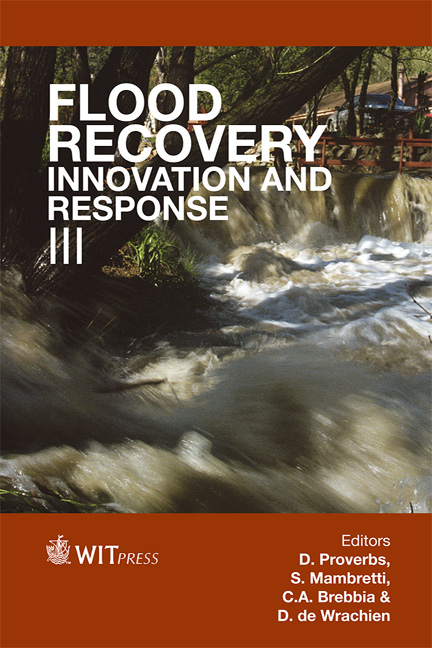Analysis Of Runoff Variation According To Subbasin Division
Price
Free (open access)
Transaction
Volume
159
Pages
12
Page Range
179 - 190
Published
2012
Size
2,379 kb
Paper DOI
10.2495/FRIAR120151
Copyright
WIT Press
Author(s)
M. Yu, C. Choi, J. Ji & J. Yi
Abstract
Unlike in the past, recently in Korea, heavy rainfall has often been observed out of the rainy season. In terms of patterns, rainfall becomes more focused spatially, and rainfall events occur frequently that exceed the recorded amount of past rainfall by frequency. Consequently, flood disasters happen more often, leading to great economic losses. In this research, flood runoff variation is analyzed according to subbasin divisions. The HEC-HMS model is used to simulate a rainfall-runoff process. The inverse distance weighted (IDW) method is used to distribute the observed rainfall to an entire basin, and the modified Clark (ModClark) method is used to simulate runoff using spatially distributed rainfall and geographic data. Furthermore, the runoff variation pattern is reviewed and compared with the observed data according to the number of subbasin divisions. The results show that the peak runoff increases and the peak time decreases as the number of subbasins increases. However, neither the peak runoff nor the peak time shows these patterns if the number of subbasin divisions exceed nine. Keywords: HEC-HMS, ModClark, subbasin division, IDW.
Keywords
HEC-HMS, ModClark, subbasin division, IDW





